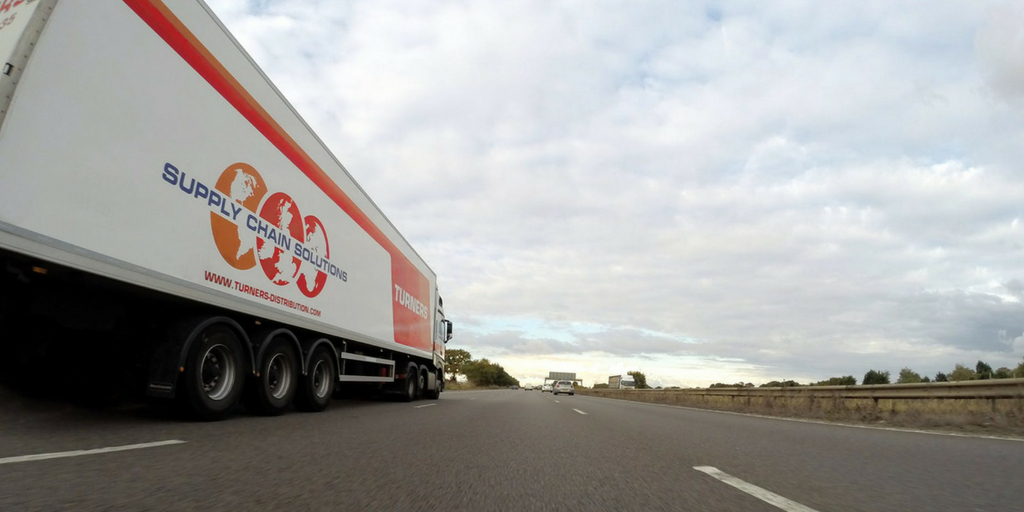The Internet of Things is revolutionizing manufacturing and supply chain. Is your organization prepared?
This article is part of a series of articles written by MBA students and graduates from the University of New Hampshire Peter T. Paul College of Business and Economics.
“If you think that the internet has changed your life, think again. The Internet of Things (IoT) is about to change it all over again!”
This famous quote from co-founder of Aria Systems, Brendan O’Brien, sums up the significant role that the Internet of Things is playing now, and also its unlimited potential in the near future. The technology can be defined as the networked connection of physical objects.
[bctt tweet=”More than 1.2 trillion items on earth now have the potential to join the IoT network, but less than one percent of them are connected to the internet.” username=”Fronetics”]
Since 2014, Internet of Things is no longer a new term for most companies. However, this is just the beginning of the IoT revolution. More than 1.2 trillion items on earth now have the potential to join the IoT network, but less than one percent of them are connected to the internet.
And if we look at estimated worldwide spending on IoT through 2020, manufacturing, logistics and utilities are the industries that will spend the most money on this technology. This is partially due to their reliance on supply chain management. In addition, their supply chain networks are usually much more complex then companies from other industries.
The real value of Internet of Things is the data captured during the process, instead of the devices themselves. Nowadays customers are expecting higher quality products delivered in the shortest amount of time. That trend requires companies to have a more efficient supply chain in order to fulfill the demand. Brand matters less as it did a decade ago.
How to move products from the factory to consumers’ hands more efficiently becomes the new challenge for all players across all industries. Meanwhile, saving cost, adding asset velocity through enhanced transparency, as well as visibility are also the potential benefits by embracing the Internet of Things.
There are a number of IoT practices in supply chain:
Operational efficiency
Warehouses always play a vital role in a supply chain. It is also an area where IoT technology shows its magic by providing competitive advantages through data acquired from sensor networks. And generally, it can be improved from four aspects:
- Manufacturing maintenance – Sensors and robots linked to the internet increase up-times, reduce operational costs, and improve overall service quality. By visualizing and collecting data — such as temperature and equipment malfunction — managers are able to see and control operations on the floor in a real-time manner. Data collected in the IoT process can also be used in setting alerts for predictive maintenance. It works like HP Instant Ink, which will automatically order new ink when you the printer is about to run out of the old one.
- Inventory forecasting – As Vice President of IT at DHL Supply Chain Javier Esplugas said: managers no longer have to wait for weeks or months to get a report to have an understanding what happened during the last quarter. Instead, managers can make decisions on things that are happening now. Even companies using a 3PL can closely monitor the distribution centers and warehouses so that they can avoid prolonged cycle times and receive warnings in advance.
- Asset tracking – In a warehouse, scales and visual sensors can alert workers about fulfillment needs. The IoT also reduces human error for inbound and outbound records, requiring less human capital for one warehouse.
- Freight transportation – Logistics also holds a great potential for IoT networks. Today, sensors can track and monitor a container in a freighter in the middle of the sea or on a cargo flight. In the future, IoT will also be used to provide a more secure freight transportation environment. In 2016, around $3.7 million worth of consumable goods was stolen in cargo thefts in the U.S. The number of incidents reported in 2016 was 692. Through IoT technology, owners will have access to real-time information on the movement of goods.
Real-world examples
We’ve already seen leading car manufacturer BMW using IoT to improve its product lines efficiency. That is the most basic level of optimization within a warehouse.
A more thorough example would come from DHL. This global company actively involves IoT in different stages of its logistics process.
The journey of a package at DHL starts at the time it’s received by a carrier. By scanning the bar code or QR code on the package, it is formally recorded in the company’s system.
When the package arrives at the warehouse, basic information such as height, weight, and goods type will be collected as it enters the gate, providing accurate inventory control for workers. Sensors in the facility will be constantly monitoring the condition, as well as location of the items, giving workers a visual graph on the computer. When the package leaves the warehouse or sorting center, sensors built in the gate will collect information again for outbound items. Cameras attached to the gateways could also be used for damage detection.
They call the warehouse with all those systems the Smart Warehouse. And now they are testing the solution in multiple locations.
Due to the fact that DHL has been focusing on global logistics, its activities always include freight transportation. To reduce the inventory delays as well as the cost of stolen goods, DHL expects to set up location and condition monitoring through IoT. Ultimately, transport visibility and security functions will be enhanced.
What’s more, DHL’s Supply Chain segment is developing a software that gives clients a way to manage global supply chain risk by providing alternatives. The tool can find other optimized solutions by leveraging data collected from connected objectives.
Last-mile delivery
It makes a lot of sense to introduce IoT to warehouse management or freight transportation. However, for last-mile delivery, it can be a very different story. This final part is highly dependent on labor.
Carriers use data collected from vehicles for road condition in order to optimize the route. Before delivery, they would send notification to the end-customer, who has the choice to either accept the scheduled delivery time or re-schedule the delivery.
The future
By the year of 2020, the number of devices connected to the IoT will be over 50 billion. But that’s still just 3 percent of the number of all things on earth.
JDA’s Intelligent Manufacturing Survey discovered that 57 percent of manufacturers were going to incorporate IoT into their digital supply chain strategy. However, according to an Accenture report, up until the beginning of 2017, 88 percent of manufacturing executives were not prepared to adopt the technology. This is going to benefit companies that are willing to be the first movers and create barriers for the rest to catch up.
So, is your company ready for the digital revolution?
About the author
Xiaoxue Liu, originally from China, is a current MBA student at University of New Hampshire, with a huge interest in supply chain digitalization.
Related posts:


